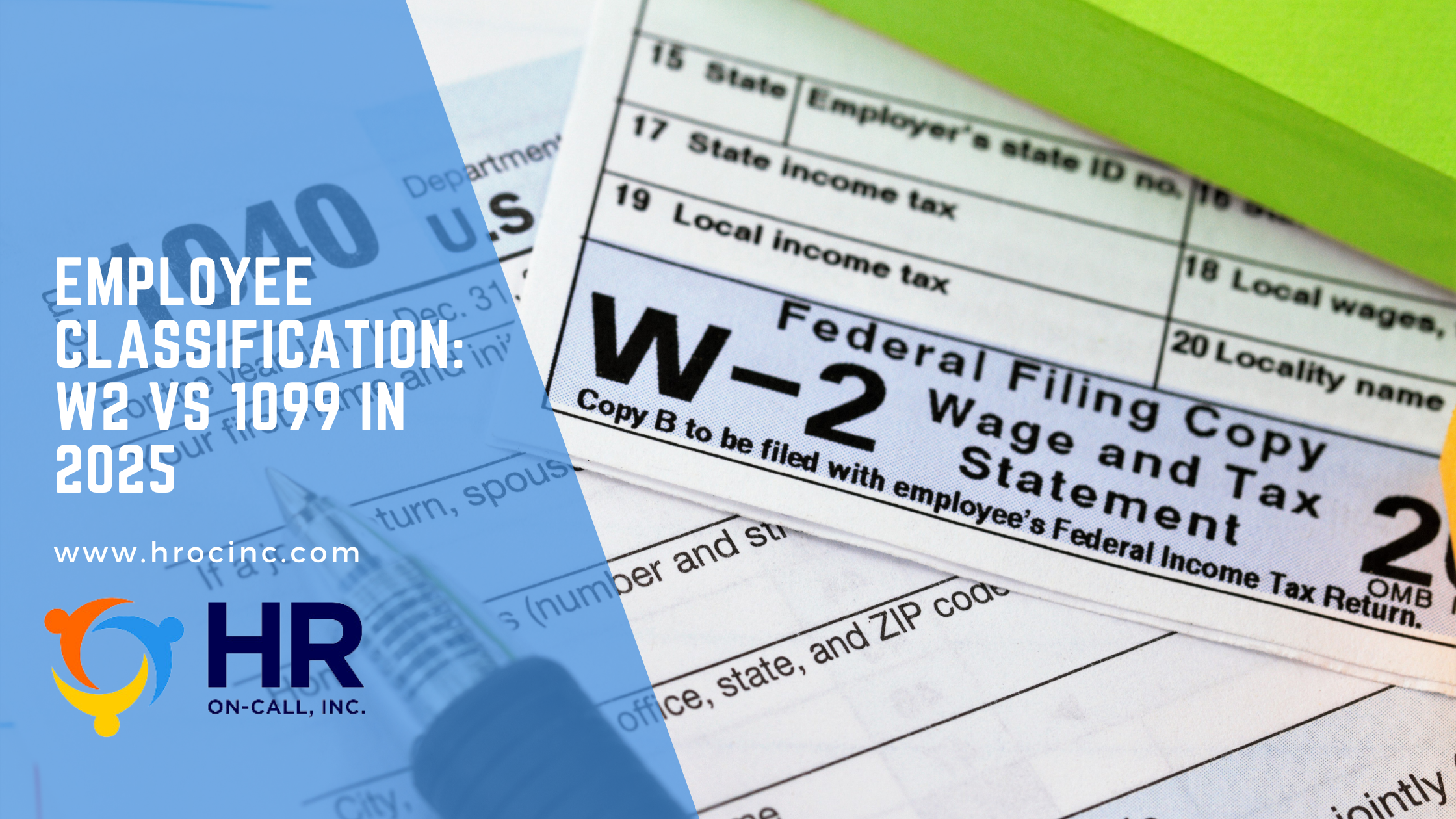What HR Needs to Know to Stay Compliant and Competitive
The world of work continues to evolve—and with it, the rules around how we classify employees. In 2025, the line between W-2 employees and 1099 independent contractors can feel blurrier than ever, especially with the rise of remote work, the gig economy, and evolving state and federal guidelines.
But make no mistake: misclassifying workers can result in serious legal, financial, and reputational consequences. As HR professionals, business owners, or hiring managers, understanding the difference between W-2 and 1099 classifications isn’t just good practice—it’s a must.
Here’s your up-to-date guide to W-2 vs. 1099 worker classification in 2025.
👥 W-2 Employees: What You Need to Know
W-2 workers are traditional employees. You, as the employer, are responsible for withholding and paying their income taxes, Social Security, and Medicare taxes, as well as covering unemployment insurance, workers’ comp, and often offering benefits like health insurance and PTO.
Characteristics of W-2 Employees:
- You control how, when, and where the work is done
- You provide tools, training, and resources
- You set work hours and supervise directly
- You offer employee benefits
- The role is ongoing or long-term
W-2 classification is best when you want to:
- Invest in a long-term team member
- Maintain control over work processes
- Foster loyalty and company culture
🧾 1099 Contractors: What You Need to Know
1099 workers are self-employed individuals or independent contractors. They are responsible for their own taxes and typically invoice you for services rendered.
Characteristics of 1099 Contractors:
- They decide how to do the work, often with minimal supervision
- They may use their own tools, systems, and processes
- They often work for multiple clients
- They are project- or outcome-based
- They are usually short-term or seasonal
1099 classification is appropriate when:
- You need specialized skills on a temporary basis
- You don’t need to control daily workflows
- You’re outsourcing work outside your core business model
⚖️ The Legal Risks of Misclassification
Misclassifying workers (intentionally or unintentionally) can result in:
- Back taxes and penalties
- Fines from the IRS, Department of Labor, or state agencies
- Lawsuits for unpaid wages, overtime, or benefits
- Damage to your reputation and employee trust
In 2025, several states and the federal government have begun tightening rules to protect gig and contract workers. That includes enhanced audits and stricter interpretation of the “economic realities” and “ABC” tests for classification.
📋 Key Classification Tests in 2025
🔹 The IRS Common Law Test
Focuses on:
- Behavioral control (how much you direct the work)
- Financial control (who bears the cost, who profits)
- Relationship type (benefits, duration, written agreements)
🔹 The ABC Test (Used in CA and other states)
A worker is an employee unless:
A. They are free from control and direction
B. They perform work outside the usual course of your business
C. They are engaged in an independently established trade or occupation
Failing any part of this test = employee classification.
✅ Best Practices for HR and Employers
To avoid misclassification issues in 2025, follow these best practices:
- Audit your current workforce classifications—especially freelancers, consultants, or remote workers.
- Use clear contracts that outline expectations, deliverables, and classification terms.
- Avoid treating contractors like employees (e.g., assigning shifts, including them in staff meetings, or providing tools).
- Consult with legal or tax professionals if you’re unsure about a role.
- Stay up to date with local, state, and federal law changes.
🧠 Final Thoughts
In 2025, flexibility in work arrangements is essential—but so is compliance. Whether you’re hiring a full-time team member or bringing on a contract specialist, how you classify that person must align with the law and how the work is actually performed.
When in doubt, classify cautiously. Erring on the side of W-2 may cost more upfront, but it can save your business thousands in penalties down the line.

